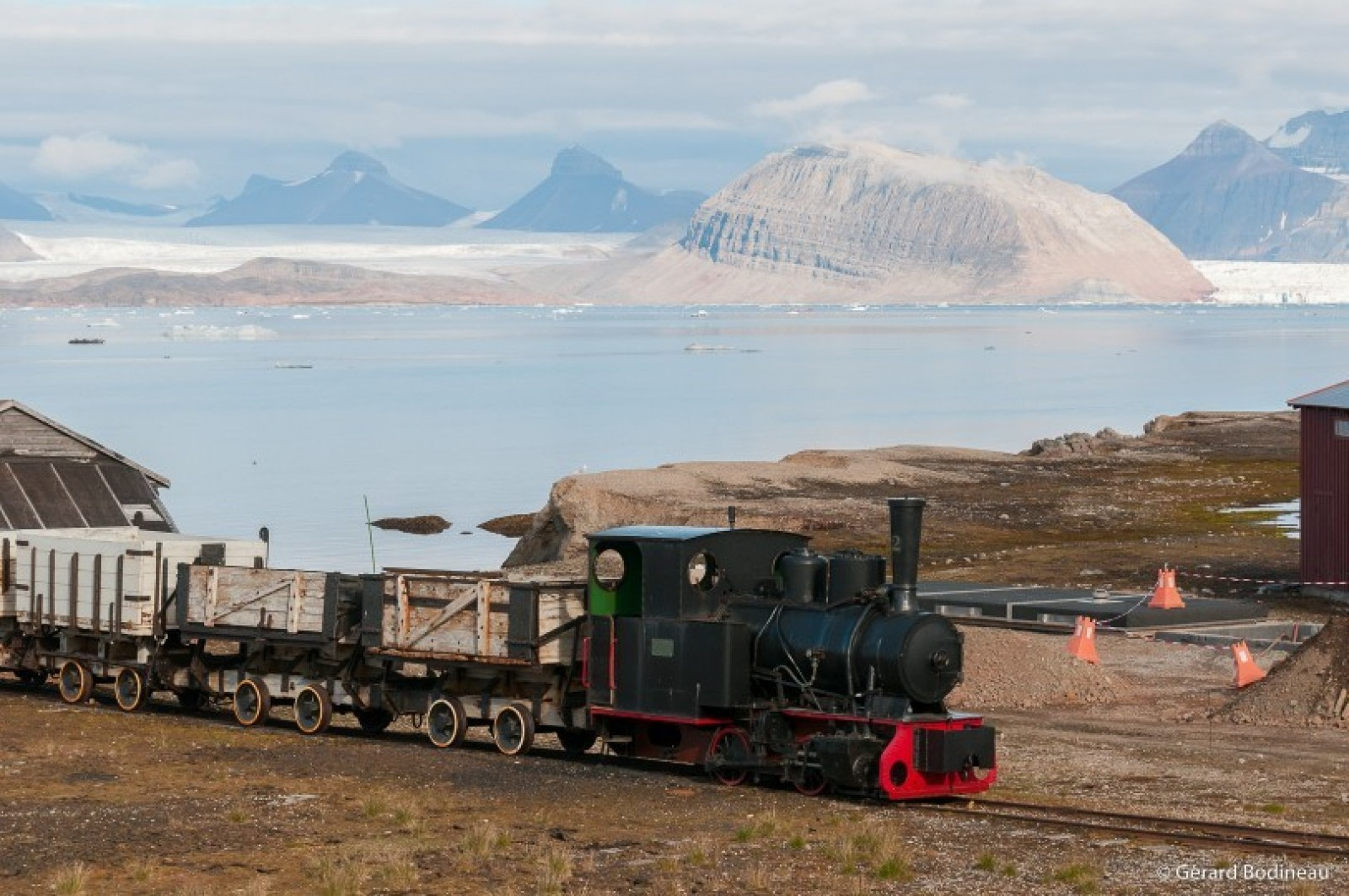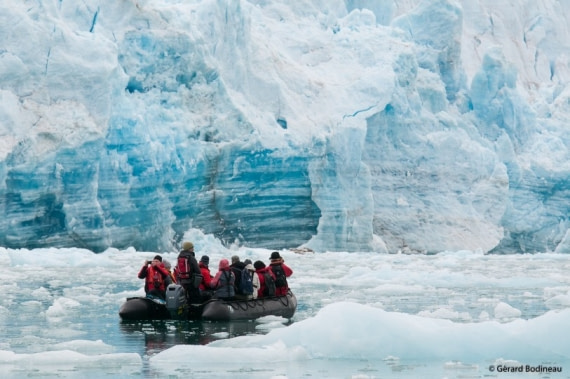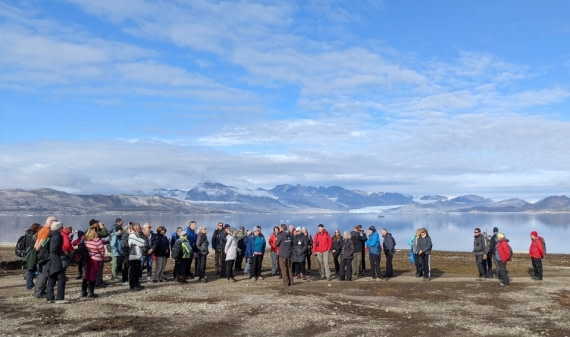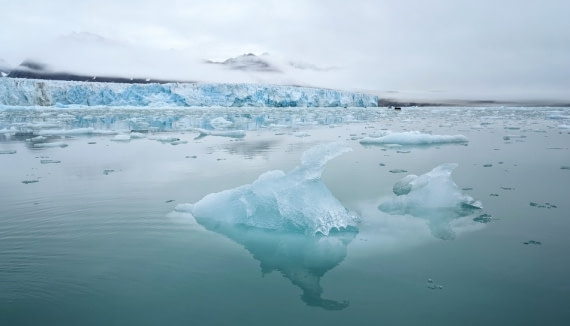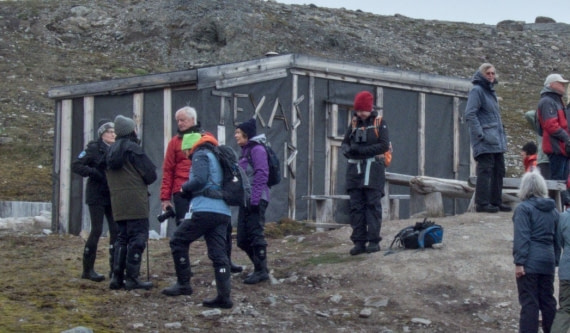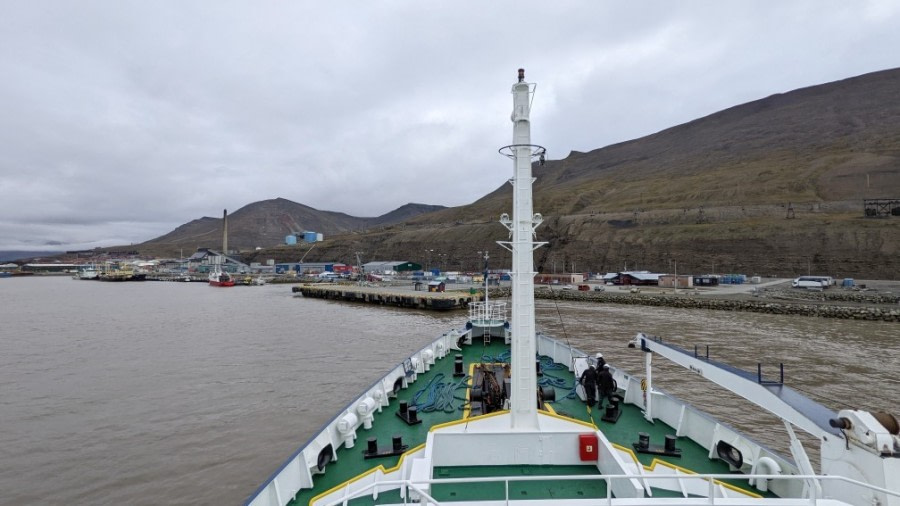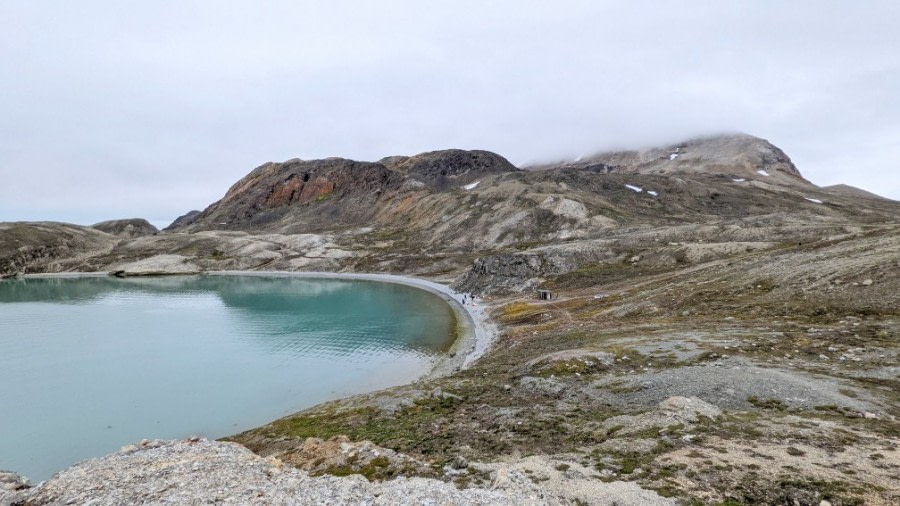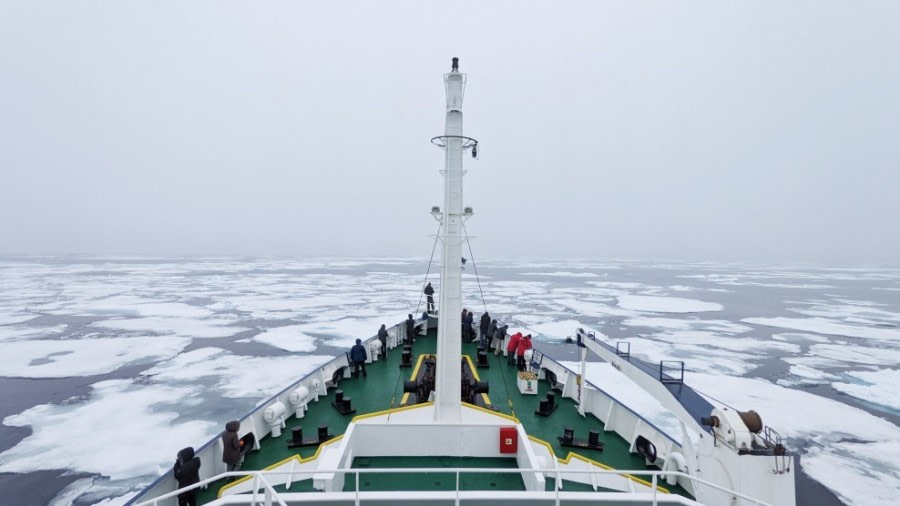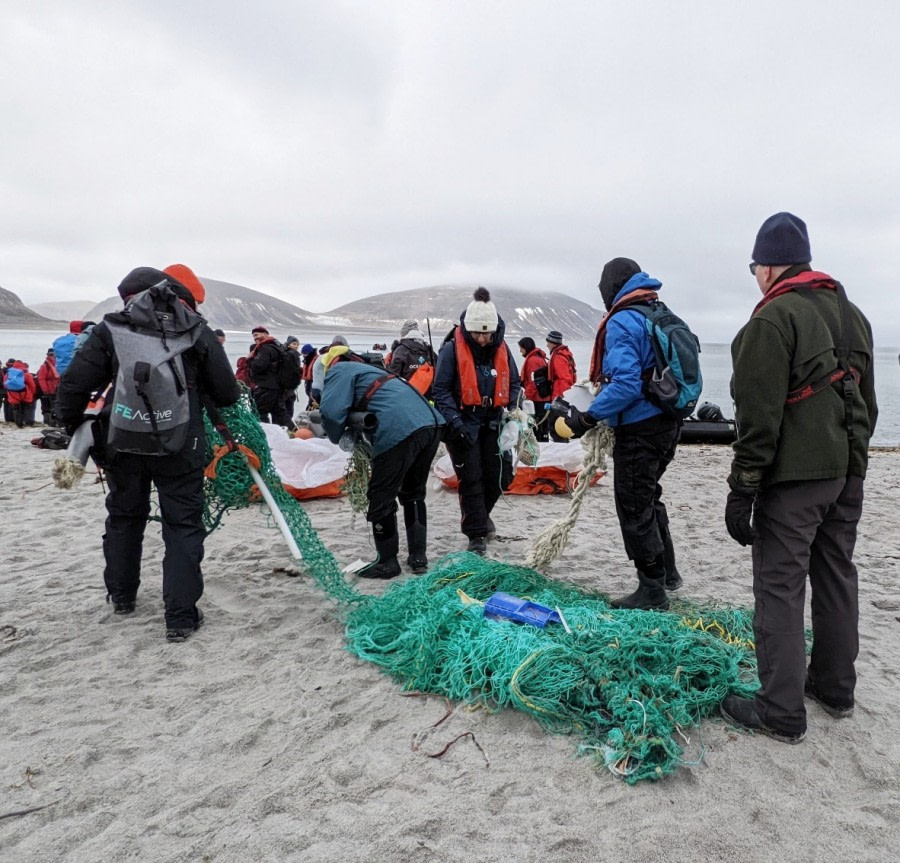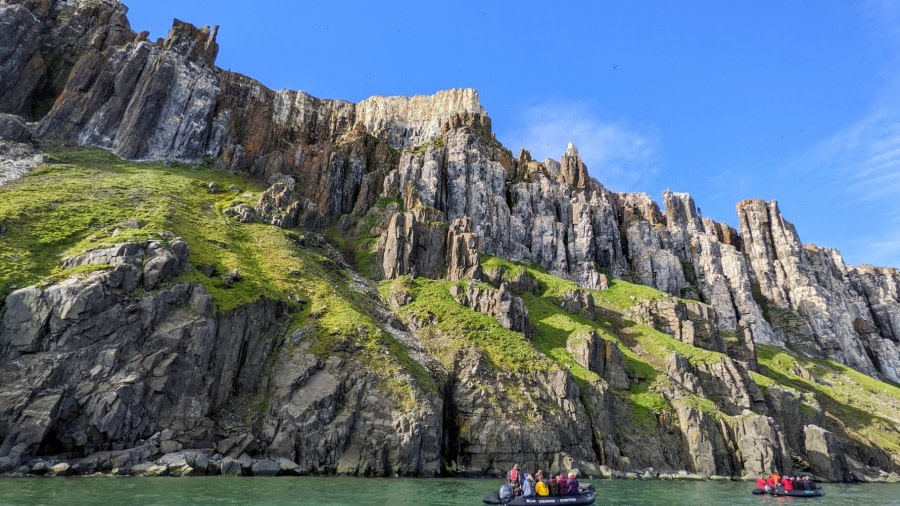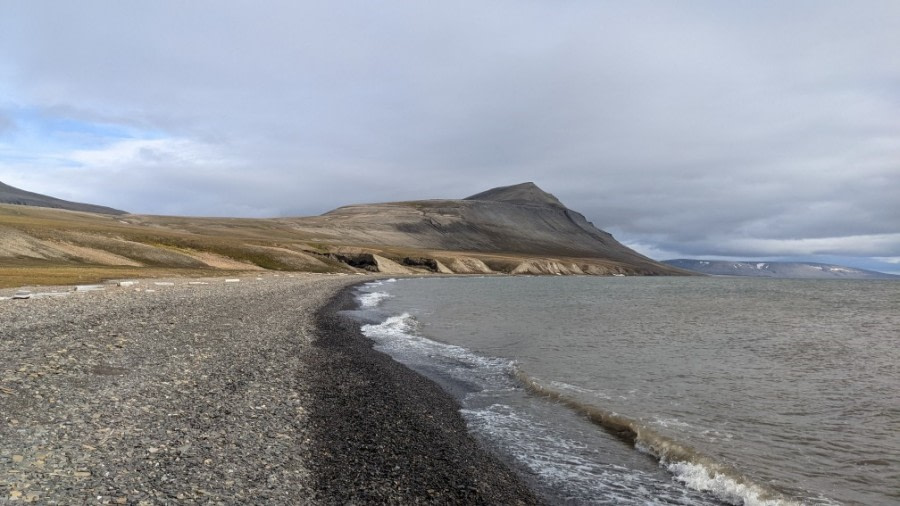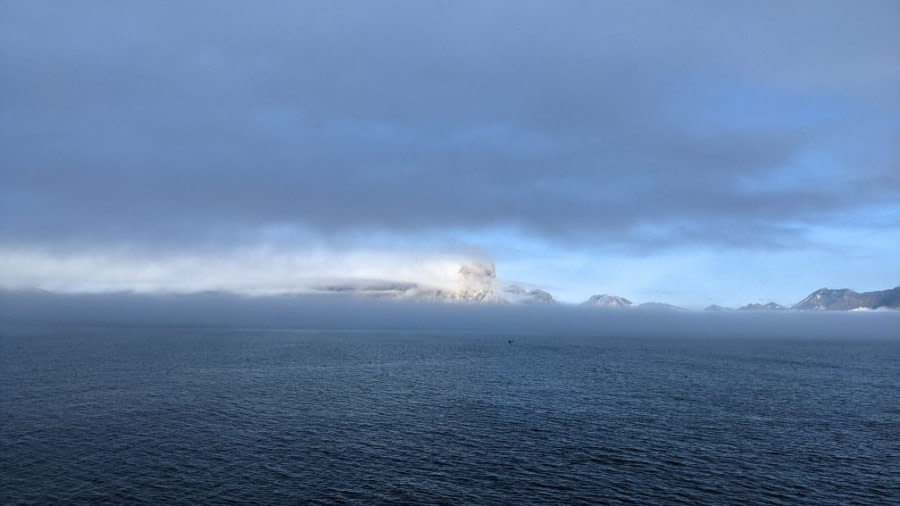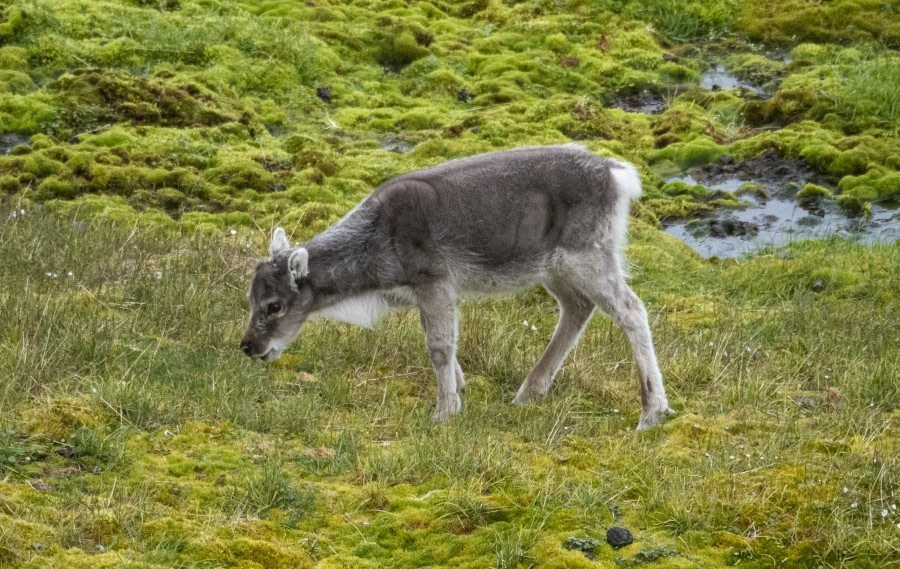| Datum: | 24.07.2022 |
| Positie: | 78°13.8’ N / 015° 36,2’ E |
| Wind: | WSW 2 |
| Weer: | Overcast |
| Luchttemperatuur: | +11 |
We get our first glimpse of Plancius from the bus. She awaits us quietly at Longyearbyen’s wharf. Her bright blue hull contrasts with the dull, colorless surroundings: the city has been imprisoned for days in a thick fog and the Isfjord, on the flanks of which Longyearbyen is nested, seems to be composed only of shades of grey and brown. The black mines and muddy hangars of Longyearbyen are certainly not quite as charming as the colorful traditional houses of Oslo, but the city is nevertheless the proud “capital” of Svalbard. A light rain greets us, but also the much warmer “welcome onboard!” of crewmembers, who take care of our luggage and show us the way to our cabins. We readily start exploring the ship, striding along corridors and decks, excited like kids discovering a new playground. We rapidly find our way to the restaurant, the reception, the bridge, or the observatory lounge. We gather in the latter for a briefing. We are introduced to our expedition leader Philipp Schaudy, charismatic Austrian man who has been travelling to polar regions by all possible means since the 70’s (and to Spitsbergen for the first time 20 years ago). He studied as a geographer and lived several years in Spitsbergen. A few minutes later, our hotel manager Alex explains the rules of life onboard, and our first officer Yaroslav details specific security elements. A drill, necessary simulation of the ship’s evacuation in case of an emergency, follows Yaroslav’s presentation. The exercise is just finished when we feel movement: the ship slowly backs away from the wharf! It is the beginning of our polar adventure. Philipp invites us to the lounge again. This time around is however not so serious, as crew members distribute champagne glasses and munchies. Our captain Ernesto Barria, exceptionally experienced sailor from Chile, raises his glass to a beautiful cruise. Philipp then introduces us to the ship’s doctor, Tijmen, from the Netherlands, and to his team of expedition guides. His assistant, Michael, from the UK, is a well-traveled polar guide and diver. He advices us to take pictures… but also to take the time to observe our surroundings with our own eyes… Cameras are not always faithful to memories, and certainly not to the grandeur of polar landscapes! Gérard, from France, has explored the coasts of Spitsbergen during 30 years and his fellow team members sometimes joke he has been coming for so long he actually invented the place! Marie from France is a biologist specialized in animal adaptation to polar regions. Karin, from Germany, is an experienced botanist and musher who lived in Longyearbyen for nine years. Chloé is a marine biologist and diver; though she is originally from France, she now lives in Bodø near the Lofoten Islands. Phil, from Germany, is an adventurer and hiker who has been guiding in the arctic for the past 7 years (he also translates all recaps and conferences in German). Kamila, from Poland, is a nuclear physicist who recently decided to live her dream and move to Greenland, where she teaches in a small village. As Philipp jokes, all members of the expedition team are badly infected by the infamous polar virus. These passionate fellows all spend their time hopping from one pole to the other! Their goal is to contaminate us with the virus… we already have a feeling they will be successful!
